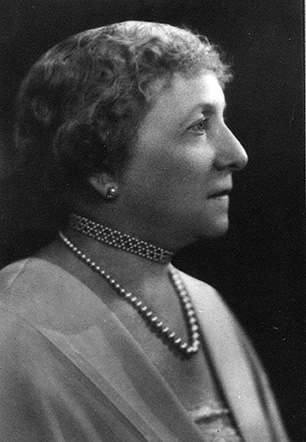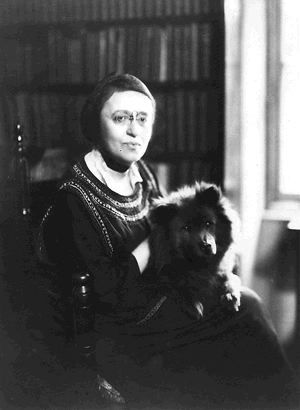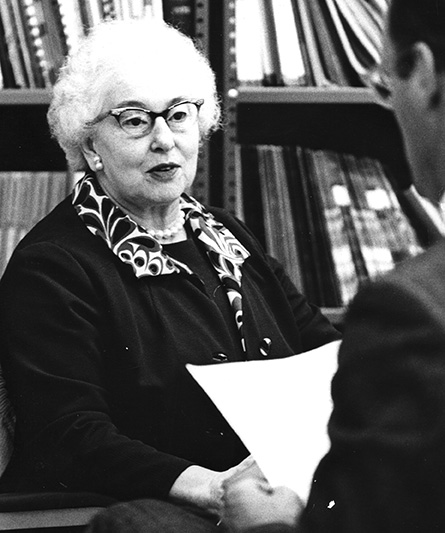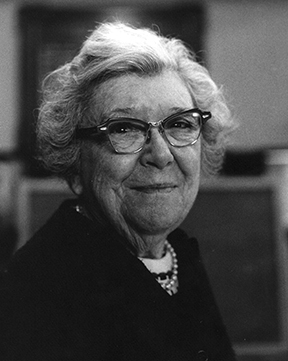For Women's History Month, we look back to five women who played a vital role in making Gilman what it is today.
While Gilman has specialized in educating boys since 1897, it is no stretch to say that we would not be here without these five women, along with many others. Who were the women who shaped your Gilman experience?
Anne Galbraith Carey
 The Gilman of today owes its very existence to Mrs. Carey. At a time when getting a good education for her sons meant sending them off to boarding school, Mrs. Carey sought a way to get the same quality in a school close enough that the boys could come home in the evenings. With her friend Mrs. Louise Este Bruce, she embarked on a barnstorming tour of the offices of Baltimore's most prominent men, gathering support for the idea that became the Country School for Boys of Baltimore City. A site was secured at Homewood House on what is now the Johns Hopkins University campus and the doors opened September 30, 1897. While the prominent fathers of the boys ran the Board of Trustees, Mrs. Carey and Mrs. Bruce managed many of the day-to-day logistics of the school, keeping it running during those early uncertain days and helping to ensure its success.
The Gilman of today owes its very existence to Mrs. Carey. At a time when getting a good education for her sons meant sending them off to boarding school, Mrs. Carey sought a way to get the same quality in a school close enough that the boys could come home in the evenings. With her friend Mrs. Louise Este Bruce, she embarked on a barnstorming tour of the offices of Baltimore's most prominent men, gathering support for the idea that became the Country School for Boys of Baltimore City. A site was secured at Homewood House on what is now the Johns Hopkins University campus and the doors opened September 30, 1897. While the prominent fathers of the boys ran the Board of Trustees, Mrs. Carey and Mrs. Bruce managed many of the day-to-day logistics of the school, keeping it running during those early uncertain days and helping to ensure its success.
Louise Este Fisher Bruce
 Mrs. Bruce was pivotal to the early success of the school, working alongside Mrs. Carey in securing its early supporters and then getting the location at Homewood House up and running. In addition to her role as one of the "founding mothers" of Gilman, Mrs. Bruce also made two important contributions in the form of awards that are still given to this day. The first is the William Cabell Bruce Jr. Athletic Prize, given to the top athlete in the name of Mrs. Bruce's son, who was a student at Gilman when he died in 1910. The second prize is the William A. Fisher Medallion, named after Mrs. Bruce's father and given to the student who exemplifies "leadership based on the influence of his character."
Mrs. Bruce was pivotal to the early success of the school, working alongside Mrs. Carey in securing its early supporters and then getting the location at Homewood House up and running. In addition to her role as one of the "founding mothers" of Gilman, Mrs. Bruce also made two important contributions in the form of awards that are still given to this day. The first is the William Cabell Bruce Jr. Athletic Prize, given to the top athlete in the name of Mrs. Bruce's son, who was a student at Gilman when he died in 1910. The second prize is the William A. Fisher Medallion, named after Mrs. Bruce's father and given to the student who exemplifies "leadership based on the influence of his character."
Elisabeth Gilman
 The daughter of Dr. Daniel Coit Gilman, our namesake, Elisabeth Gilman took a great interest in the success of the school. Ms. Gilman was one of the investors who helped build the school's home in Roland Park and provided funds for the Gilman Memorial Library as well as the Elisabeth Woolsey Gilman Reading Prize. During World War I, Ms. Gilman served as a nurse for the YMCA in France and corresponded often with the boys of the school. A scrapbook from her time in France resides in the Archives.
The daughter of Dr. Daniel Coit Gilman, our namesake, Elisabeth Gilman took a great interest in the success of the school. Ms. Gilman was one of the investors who helped build the school's home in Roland Park and provided funds for the Gilman Memorial Library as well as the Elisabeth Woolsey Gilman Reading Prize. During World War I, Ms. Gilman served as a nurse for the YMCA in France and corresponded often with the boys of the school. A scrapbook from her time in France resides in the Archives.
Helen Stevens
 Ms. Stevens joined the Gilman faculty in 1935 as its very first second-grade teacher. The next year she moved to first grade, where she stayed until 1968. It was in 1968 that she undertook a nationwide study of language arts programs, leading to a complete overhaul of Gilman's approach to reading and study skills for grades 1-8. Ms. Stevens also served as Director of Admissions for Lower School and taught music classes for grades 1-6. By the time she retired in 1984, Ms. Stevens had left a lasting impression on the Lower School, and Gilman as a whole.
Ms. Stevens joined the Gilman faculty in 1935 as its very first second-grade teacher. The next year she moved to first grade, where she stayed until 1968. It was in 1968 that she undertook a nationwide study of language arts programs, leading to a complete overhaul of Gilman's approach to reading and study skills for grades 1-8. Ms. Stevens also served as Director of Admissions for Lower School and taught music classes for grades 1-6. By the time she retired in 1984, Ms. Stevens had left a lasting impression on the Lower School, and Gilman as a whole.
May Holmes
No list generated by the current school archivist would be complete without May Holmes. Joining the Gilman staff in 1916 as secretary of the business manager, she briefly moved to McDonogh from 1920-24 before returning to her senses and rejoining Gilman. Upon her return, she served as secretary to three headmasters before her first retirement in 1963. In 1965, she returned to Gilman once again, this time as its first Archivist. It was Ms. Holmes who saved much of the school's history from ruin or loss and in 1972, she obtained a home for it all near the library. Ms. Holmes' final retirement from Gilman came in 1981 at the age of 89. Through her actions to save our history, Ms. Holmes became an integral part of it.

